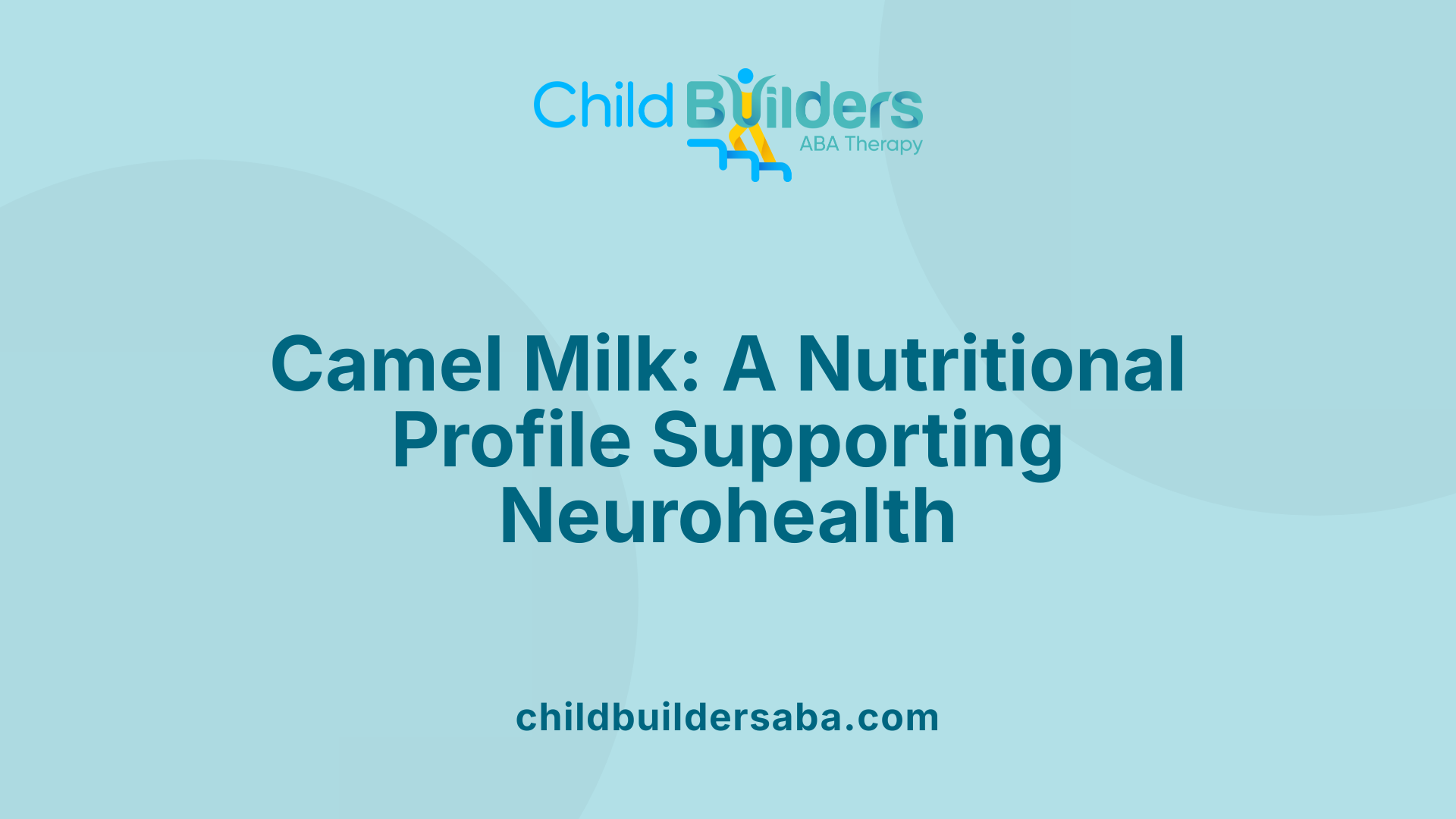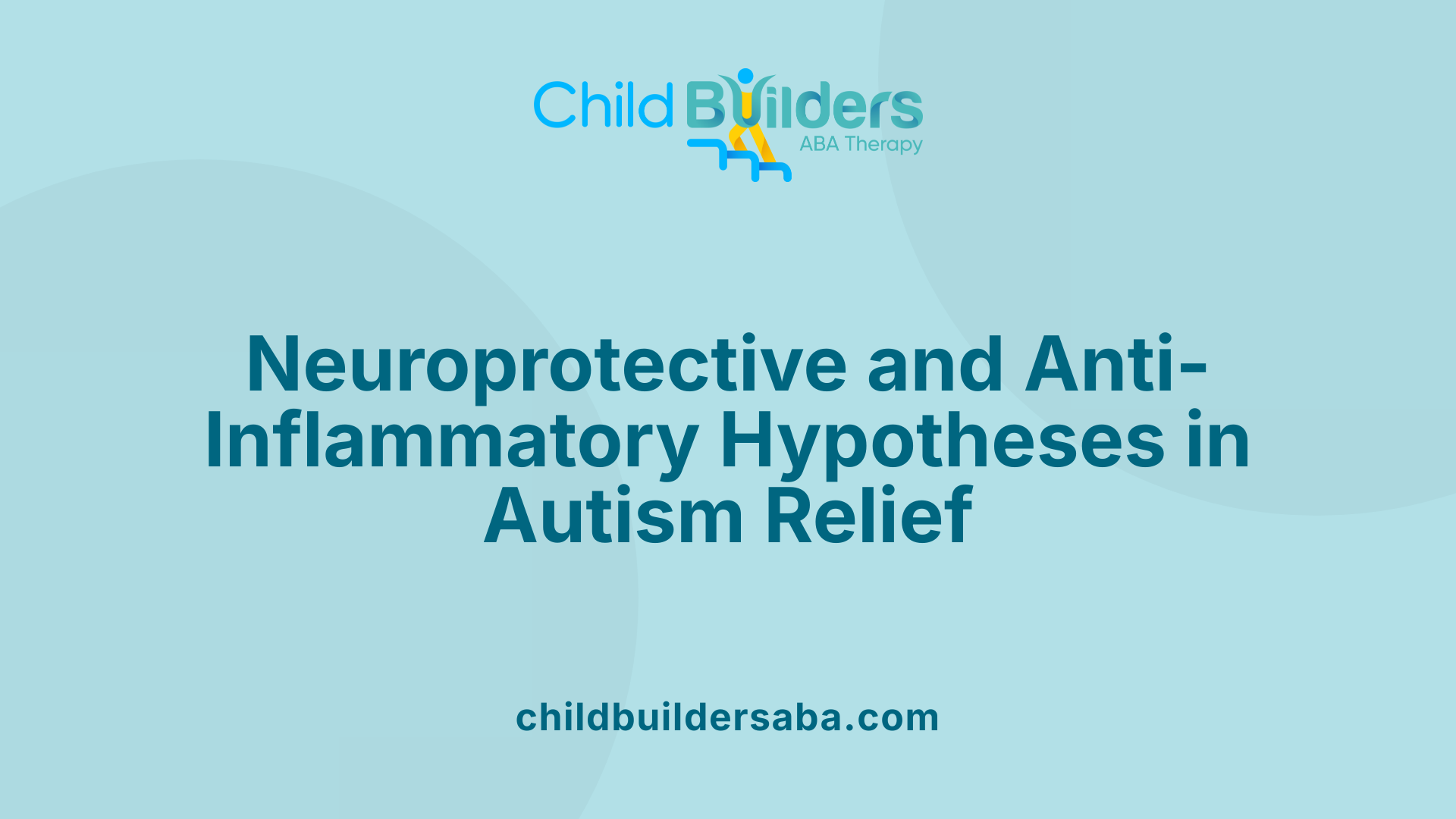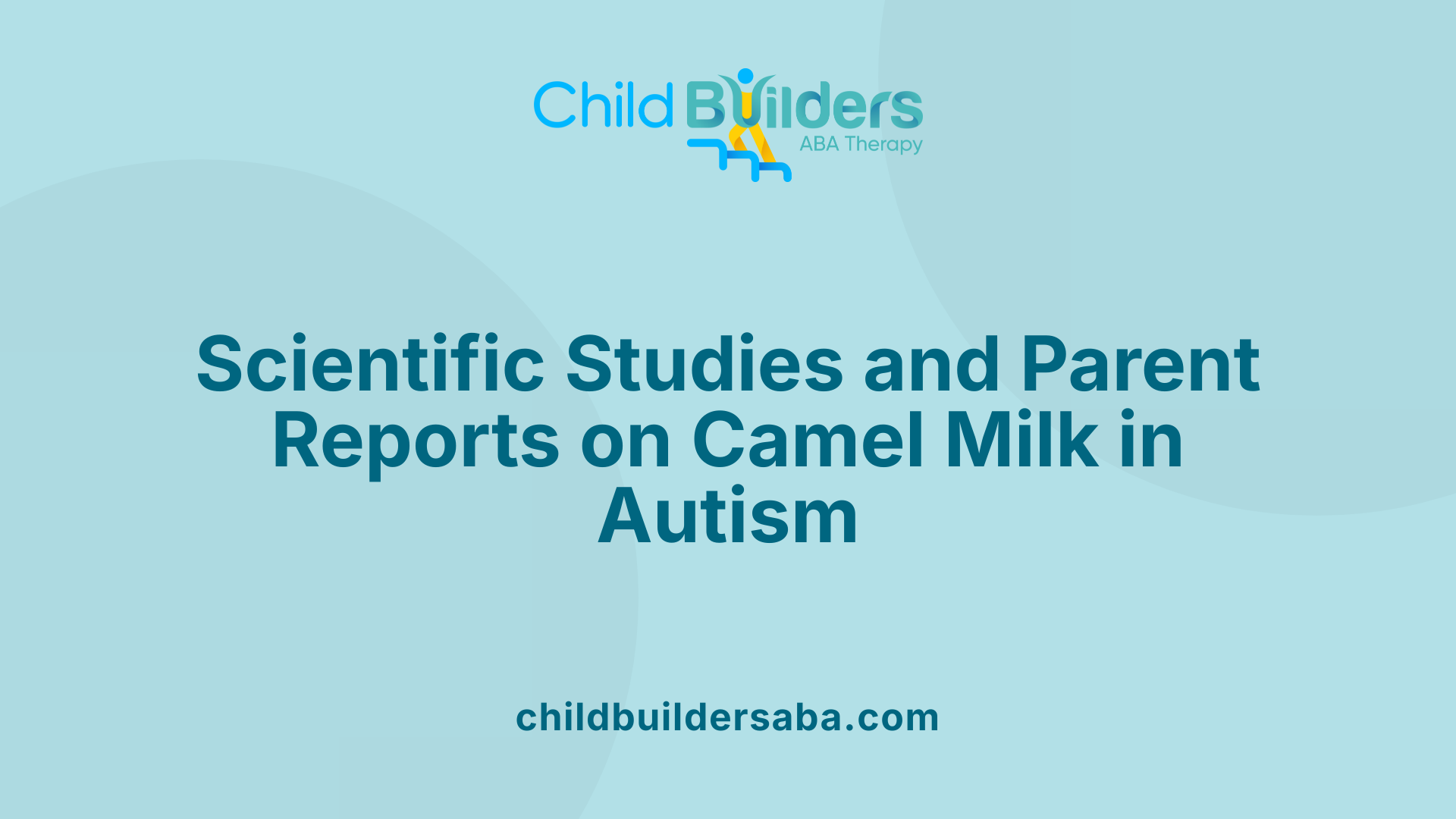Camel Milk For Autism

Exploring Traditional Remedies and Modern Science
Camel milk has long been valued in Middle Eastern, Asian, and African cultures for its health benefits. Recently, scientific research has turned its attention to the potential therapeutic properties of this ancient remedy for autism spectrum disorder (ASD). This article delves into the nutritional composition, scientific hypotheses, and clinical evidence surrounding camel milk as a supportive treatment for autism, offering insights into how its unique properties may address some of the core challenges faced by individuals with ASD.
The Nutritional Composition and Bioactive Components of Camel Milk

What are the nutritional properties of camel milk that support its potential use in autism treatment?
Camel milk has been used traditionally across parts of Africa, Asia, and the Middle East not only as a staple food but also for its medicinal properties. Recent scientific studies highlight its rich nutritional profile and bioactive compounds, which may benefit individuals with autism.
One of the notable features of camel milk is its high concentration of immunoglobulins and lactoferrin. Immunoglobulins are antibodies that help fight infections, while lactoferrin is a protein known for its immune-boosting and anti-inflammatory effects. Both components support immune health and may help modulate immune responses often observed in children with autism.
In addition to these immune factors, camel milk contains a variety of antioxidant vitamins, including vitamin A, B2 (riboflavin), C, and E. These vitamins play crucial roles in reducing oxidative stress, which has been linked to autism. The antioxidant content in camel milk helps neutralize reactive oxygen species (ROS), thereby protecting neuronal cells from oxidative damage.
Research indicates that camel milk can increase the levels of antioxidant enzymes such as glutathione (GSH), superoxide dismutase (SOD), and myeloperoxidase (MPO) in children with autism. Elevation of these enzymes may lower oxidative stress in the brain, which is believed to be a contributing factor in autism spectrum disorder (ASD).
The bioactive compounds in camel milk do not stop at immune modulation and antioxidant activity. They also appear to have anti-inflammatory and neuroprotective effects that can potentially improve behavioral and cognitive functions in children with autism. For example, studies measuring autism severity through tools like the Childhood Autism Rating Scale (CARS) have reported behavioral improvements following camel milk consumption.
Furthermore, anecdotal evidence from parents and preliminary scientific data suggest that regular intake of camel milk might lead to increased eye contact, improved communication, and reduced stereotypic behaviors. These improvements are thought to result from the milk’s ability to address underlying oxidative stress and inflammation within the brain.
In conclusion, the nutritional and bioactive components of camel milk—particularly its immunoglobulins, lactoferrin, antioxidant vitamins, and enzymes—may support immune health and neuroprotection. These properties make camel milk a promising supportive intervention for reducing some symptoms of autism, although more extensive research is necessary to confirm these benefits fully.
| Nutritional Component | Benefits | Additional Details |
|---|---|---|
| Immunoglobulins | Enhance immune response | Aid in immune modulation in ASD |
| Lactoferrin | Anti-inflammatory, immune-boosting | Supports neuroprotection |
| Antioxidant Vitamins | Reduce oxidative stress | Vitamins A, B2, C, E |
| Enzymes (SOD, MPO, GSH) | Decrease oxidative damage | Elevate in autistic children after intake |
While promising, it is important to note that camel milk should be consumed cautiously due to health risks associated with raw milk, and any dietary intervention should be discussed with healthcare professionals.
Scientific Hypotheses and Biological Mechanisms Behind Camel Milk's Effects on Autism

What is the scientific background and hypotheses behind using camel milk as a therapy for autism?
The scientific exploration of camel milk as a potential therapy for autism centers on its rich composition of bioactive substances that may influence immune function and reduce oxidative stress. Camel milk is traditionally valued in regions like Africa, Asia, and the Middle East for treating various health conditions, including autoimmune diseases, skin issues, and gastrointestinal problems. Its unique immunological properties, including high levels of immunoglobulins and antimicrobial compounds such as lactoferrin, suggest possible immune-modulating effects.
Recent research focuses on the antioxidant and anti-inflammatory properties of camel milk. It contains vitamins A, B2, C, E, as well as minerals like zinc and magnesium, which are crucial for immune support and neural health. These components can help counteract the high levels of reactive oxygen species (ROS) believed to contribute to autism's pathology by inducing oxidative stress and neuroinflammation.
Scientific hypotheses propose that camel milk's antioxidants, including enzymes like superoxide dismutase (SOD), glutathione (GSH), and myeloperoxidase (MPO), can elevate the body's natural defenses against oxidative damage. Studies have shown that daily camel milk consumption increases levels of these enzymes in the blood, potentially reducing oxidative stress in the brain.
Moreover, evidence suggests camel milk may modulate immune responses by decreasing pro-inflammatory chemokines such as thymus and activation-regulated chemokine (TARC). In controlled trials, children with autism consuming camel milk exhibited significant reductions in TARC levels, alongside behavioral improvements, as assessed by the Childhood Autism Rating Scale (CARS).
The hypothesis further posits that these immune and oxidative effects translate into neurobehavioral benefits. This is supported by anecdotal reports and some clinical studies where children showed enhanced social behaviors, communication, and reduced repetitive behaviors after camel milk supplementation.
In essence, the models underlying camel milk's potential benefits in autism suggest that its bioactive substances can reduce neuroinflammation and oxidative damage, thereby improving neural function and behavioral symptoms. Despite promising findings, it is important to acknowledge that current research is limited and more high-quality, large-scale studies are needed to confirm these hypotheses.
Oxidative Stress and Neuroinflammation in Autism
Autism spectrum disorder (ASD) has been linked to increased oxidative stress and neuroinflammation. Excess reactive oxygen species (ROS) can impair neural development and function, leading to core symptoms such as communication difficulties and repetitive behaviors. Elevated levels of oxidative markers and pro-inflammatory cytokines have been observed in autistic individuals.
Antioxidant Enzymes and Neuroprotection
Camel milk is rich in natural antioxidants, notably enzymes like superoxide dismutase (SOD), glutathione (GSH), and myeloperoxidase (MPO). These enzymes help neutralize ROS, protecting neurons from oxidative injury. Scientific studies have demonstrated that both raw and boiled camel milk can increase these enzyme levels in the bloodstream, implying a systemic reduction in oxidative stress, which may benefit neural health.
Immune Modulation and Autoimmunity
Camel milk contains immunoglobulins and lactoferrin, which can modulate immune responses. Some research indicates that children with autism often have immune dysregulation, characterized by elevated inflammatory markers. Camel milk's capacity to decrease chemokines like TARC and improve immune markers suggests it may help rebalance immune activity, potentially alleviating neuroinflammation and its behavioral consequences.
| Aspect | Impact in Autism | Supporting Evidence | Additional Notes |
|---|---|---|---|
| Oxidative stress | Contributes to neural damage | Increased enzymes after camel milk intake | Reduces ROS levels |
| Immune response | Autoimmunity and inflammation | Decreases TARC levels | Enhances immune regulation |
| Behavioral outcomes | Improved communication, social behavior | Reductions in CARS scores | Anecdotal reports and small studies |
While these mechanisms are promising, it remains essential to approach camel milk therapy with caution due to the lack of extensive high-quality evidence. Healthcare professionals should be consulted, especially considering risks associated with raw camel milk, such as foodborne illnesses.
Review of Scientific Evidence and Clinical Studies

What scientific research exists on the potential benefits of camel milk for autism spectrum disorder?
Scientific investigations into camel milk's effects on autism have produced promising but preliminary findings. Notably, several clinical trials have examined how camel milk impacts behavioral and biological markers in autistic children.
One well-designed double-blind, placebo-controlled trial involved 45 children aged 2 to 12 years diagnosed with autism. Children were divided into three groups: boiled camel milk, raw camel milk, and cow milk as a placebo. Each child consumed 500 ml daily for two weeks. Before and after the intervention, researchers measured specific biomarkers such as plasma levels of glutathione (GSH), superoxide dismutase (SOD), myeloperoxidase (MPO), and thymus and activation-regulated chemokine (TARC).
Results showed significant increases in antioxidant enzymes in both camel milk groups, indicating a reduction in oxidative stress. Moreover, children consuming raw camel milk experienced notable improvements in their Autism severity, as reflected in lower Childhood Autism Rating Scale (CARS) scores. The decrease in TARC levels suggested modulation of immune responses.
In addition to changes in biological markers, behavioral assessments demonstrated that camel milk consumption might improve social interaction, communication, and reduce stereotypic behaviors. These findings support the hypothesis that camel milk’s antioxidant and immunomodulatory properties could contribute to symptom relief.
Despite these encouraging results, the study's limitations include a relatively short duration and small sample size. Nonetheless, the research indicates that camel milk could be an adjunct therapy for autism, particularly due to its rich content of immunoglobulins, lactoferrin, vitamin C, and antioxidant enzymes.
While more extensive research is necessary to confirm these benefits and determine long-term safety, current evidence points toward a potential role for camel milk in managing oxidative stress and modulating immune responses in autism spectrum disorder.
Biomarkers of oxidative stress and immune function
Studies consistently report elevated oxidative stress levels in autistic individuals. Camel milk appears to enhance antioxidant defenses by increasing plasma levels of enzymes such as SOD and MPO, which combat reactive oxygen species (ROS). A decrease in the chemokine TARC further implies improved immune regulation.
Behavioral assessments and symptom measurement
Improvements in autistic behaviors after camel milk intake have been quantified using tools like the CARS. Participants showed reductions in autism severity, with some parents observing enhancements in social behaviors, eye contact, and communication. These assessments support the biological findings and offer a comprehensive view of potential therapeutic effects.
| Study Aspect | Findings | Notes |
|---|---|---|
| Sample Size | 45 children, aged 2-12 | Limited but robust for preliminary data |
| Intervention Duration | 2 weeks | Short-term study, longer studies needed |
| Treatment Types | Raw camel milk, boiled camel milk, placebo (cow milk) | Both forms showed antioxidant benefits |
| Key Outcomes | Increased antioxidant enzymes, decreased CARS scores | Suggests reduced ASD severity |
| Biomarkers Measured | GSH, SOD, MPO, TARC | Indicators of oxidative stress and immune function |
| Parent Reports | Noted behavioral and physical improvements | Anecdotal, but supportive of clinical findings |
What does the current research imply?
While there is promising scientific evidence that camel milk may help reduce oxidative stress and improve behavioral symptoms in autism, it is important to note that these studies are relatively small and short-term. The potential benefits appear linked to camel milk's high antioxidant content and its immunomodulatory effects.
Consulting healthcare professionals before incorporating camel milk into treatment plans is crucial, especially considering safety concerns regarding raw milk. Overall, ongoing research aims to clarify the extent of these benefits and to determine optimal dosing and duration for therapeutic use.
Clinical Evidence and Observations from Parent Reports
Are there any scientific studies supporting the use of camel milk for autism-related speech delay or behavioral issues?
The scientific community currently has limited rigorous evidence directly linking camel milk consumption to improvements in speech delay or behavioral symptoms specific to autism. Several small-scale studies and anecdotal reports suggest potential benefits, especially in areas like social interaction, eye contact, and reduction of stereotypic behaviors.
One notable study involved 45 children diagnosed with autism aged 2 to 12 years. Over two weeks, participants consumed 500 ml of camel milk daily—either raw or boiled—and showed significant reductions in a key immune marker, TARC, in their blood. More importantly, children in the raw camel milk group demonstrated notable improvements in their Childhood Autism Rating Scale (CARS) scores, indicating a reduction in autism severity.
While these findings are promising, they come with limitations. The study’s small sample size, short duration, and lack of long-term follow-up mean that conclusions must be drawn cautiously. Moreover, the improvements observed could be influenced by other factors such as dietary changes or placebo effects.
Most health experts emphasize the need for larger, well-designed randomized controlled trials to verify these initial findings. Currently, the evidence does not support camel milk as a standalone treatment for autism, and it should complement, not replace, evidence-based therapies.
Nevertheless, many parents have reported subjective improvements after introducing camel milk into their children’s diets. Some describe enhanced speech, better social interactions, improved skin texture, and a decrease in stimming behaviors. However, these reports are anecdotal and require scientific validation.
In summary, while preliminary data hint at potential benefits—possibly related to camel milk’s antioxidant and immune-modulating properties—more rigorous research is essential. Until then, healthcare professionals advise caution, emphasizing that camel milk should be used only with medical guidance and not as a substitute for established autism treatments.
Safety Considerations and Precautions
Is camel milk safe for children and suitable for those with autism?
Camel milk has been traditionally consumed in parts of the Middle East, Africa, and Asia for centuries, and current scientific research suggests it can be safe for children when properly prepared. It contains vital nutrients, antioxidants, and immune-boosting components such as immunoglobulins, lactoferrin, and vitamin C, which support overall health and immune function.
When it comes to autism spectrum disorder (ASD), some recent studies and anecdotal reports indicate that camel milk might have therapeutic potential. For example, research involving autistic children showed that both raw and boiled camel milk increased antioxidant enzyme levels like superoxide dismutase (SOD), glutathione (GSH), and myeloperoxidase (MPO), which are associated with reduced oxidative stress. Improvements in behavioral scores, such as the Childhood Autism Rating Scale (CARS), have also been reported.
However, it is essential to exercise caution. While these findings are promising, they are not yet conclusive. Camel milk is generally well-tolerated, but the raw form carries a risk of foodborne illnesses, including bacterial infections like Salmonella, E. coli, and Brucella. Proper pasteurization reduces these risks significantly.
Supervision by healthcare professionals is crucial before adopting camel milk as part of a dietary or therapeutic regimen. They can help determine the appropriate quantity, form (raw or pasteurized), and monitor for any adverse effects. Because more extensive, high-quality research is needed, it is important that camel milk use does not replace conventional treatments but is integrated as a complementary approach under medical guidance.
In summary, when consumed safely and responsibly, camel milk can be a nutritious addition for children, including those with autism, but safety precautions and professional supervision are vital to avoid any health risks.
Practical Aspects: Consumption and Accessibility of Camel Milk
What are the sources and forms of camel milk (raw, pasteurized, powder)?
Camel milk is produced by camels and has a long history of being consumed in regions like the Middle East, Africa, and parts of Asia. Today, it is available in various forms to meet different needs and safety standards.
You can find raw camel milk directly from farms or specialized markets, especially in countries where camel dairy farming is common. Raw camel milk is often preferred by traditional consumers, but it carries health risks such as bacterial contamination.
To ensure safety and extend shelf life, camel milk can be pasteurized. Pasteurized camel milk undergoes heat treatment to eliminate harmful pathogens while retaining most of its nutritional properties.
For convenience and longer storage, camel milk is also available in powdered form. Powdered camel milk is produced by freeze-drying or spray-drying and can be purchased online or in specialty health stores. It allows for easy transport and storage but may have some differences in taste and texture compared to fresh milk.
How is camel milk typically consumed?
Consumers often enjoy camel milk in its liquid form, drinking it directly.
In some regions, camel milk is mixed into beverages, used in cooking, or incorporated into traditional remedies. For individuals considering its therapeutic potential, adding camel milk to the diet can be straightforward. It can be enjoyed on its own or blended into smoothies, teas, or cereals.
Camel milk can be consumed raw or boiled. However, health authorities strongly recommend boiling or pasteurizing raw milk before consumption to prevent foodborne illnesses.
Some people prepare camel milk into dairy products like yogurt or cheese, which can further enhance its nutritional benefits.
What are the availability and legal considerations?
Access to camel milk varies significantly depending on location. In countries where camel farming is well-established, camel milk products are often available in local markets, health stores, or through online vendors.
International regulations govern the sale and import of camel milk, especially concerning pasteurization standards and safety protocols. In many regions, raw camel milk is regulated or restricted due to health concerns.
Before purchasing, consumers should verify the source, ensuring the milk follows safety standards. Buying from reputable farms or certified vendors reduces health risks.
In some countries, laws may prohibit or limit the sale of raw camel milk, requiring consumers to opt for pasteurized or processed forms.
How to access camel milk for therapeutic use?
Accessing camel milk for potential health benefits involves several steps. Start by identifying reputable sources, such as local farms or online vendors specializing in camel dairy products. It’s crucial to ensure the milk is properly processed and safe for consumption.
Consulting healthcare professionals is advisable, especially for individuals with health conditions or those giving camel milk to children. They can provide guidance on dosage, safety, and dietary integration.
In regions where camel milk is not readily available, some companies sell powdered or capsule forms as supplements, which may also be suitable for certain therapeutic purposes.
Research is ongoing, and while preliminary studies show promising results, it’s essential to view camel milk as a complementary approach rather than a definitive cure. Always prioritize safety and professional advice when considering its use for health or autism management.
Future Directions and Final Thoughts
While ongoing research increasingly supports the potential therapeutic role of camel milk in autism, it remains an adjunct rather than a replaceable treatment option. Its nutritional richness, coupled with anti-inflammatory and antioxidant properties, makes it a promising area for further scientific exploration. As this traditional remedy gains scientific validation, healthcare professionals and researchers are encouraged to conduct larger, well-controlled trials to fully establish efficacy, safety, and mechanisms. Parents and caregivers should consult healthcare providers before incorporating camel milk into treatment regimens, and emphasis should be placed on safe practices to prevent health risks. Ultimately, camel milk's role in autism management may evolve as evidence accumulates, bridging traditional wisdom with modern science to improve quality of life for individuals with autism.
References
- Camel Milk for Autism: What Are the Benefits?
- Camel Milk as a Potential Therapy as an Antioxidant in Autism ...
- Camel milk: autism therapy guide | Raising Children Network
- Effect of camel milk on thymus and activation-regulated chemokine ...
- Camel Milk as a Potential Therapy as an Antioxidant in Autism ...
- Camel Milk as a Potential Therapy as an Antioxidant in Autism ...
- The Application of Natural Camel Milk Products to Treat Autism ...
- Camel Milk as a Potential Therapy as an Antioxidant in Autism ...





































































































